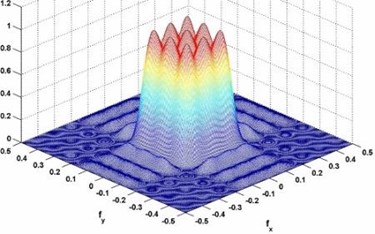KAUST Develops Algorithm To Shape MIMO Radar Waveforms In Real Time
By Jof Enriquez,
Follow me on Twitter @jofenriq

Researchers at King Abdullah University of Science and Technology (KAUST) have developed a new algorithm used to design waveforms to control MIMO (multiple input – multiple output) radar beam patterns in real time.
Radar technology has advanced far enough that it is now possible to discriminate between objects at greater distances, paving the way to a wider range of applications, from tracking medium-range ballistic missiles to studying tornado debris. MIMO has the potential to further improve radars by its ability to shape the output waveform to focus the transmitted signal in a specific direction and transmit multiple signals to match a greater number of targets.
In designing correlated waveforms, conventional MIMO radar techniques utilize highly complex iterative algorithms that make them difficult to implement. In response to this challenge, KAUST researcher Taha Bouchoucha developed a new computation scheme to derive a new algorithm that improves the process of designing these MIMO waveforms to achieve the desired beam pattern.
“MIMO radar uses several transmitting and receiving antennas at the same time, where the user can choose a different transmitted signal for each antenna,” said Bouchoucha, who performed the project with researcher Sajid Ahmed, supervised by Mohamed-Slim Alouini, Professor, Electrical Engineering, and Associate Dean, Computer, Electrical and Mathematical Science and Engineering Division, as well as Tareq Al-Naffouri, Associate Professor, Electrical Engineering, at KAUST.
“Our work was on the transmitter side, developing a simple way of constructing the transmitted waveforms to steer the signal to a specific region in space,” he added.
The researchers explained in their article published in IEEE Transactions on Signal Processing that, first, they used a low-complexity discrete Fourier transform-based, closed-form covariance matrix design technique. The matrix was then used to derive a novel closed-form algorithm to directly design the finite-alphabet constant-envelope waveforms for the desired beam pattern for large antenna arrays.
“We took advantage of a mathematical framework called the two-dimensional Fourier transform combined with fast and efficient algorithms to generate the Fourier transform parameters,” said Bouchoucha, who is now a doctoral researcher at the University of California Davis. “Waveform generation using our approach is inexpensive and practical, and it gives complete flexibility and freedom to focus the transmitted signal in a specific region in space.”
The KAUST team has filed its latest contribution to MIMO technology with the United States Patent and Trademark Office. Related, another group of KAUST researchers, led by Alouini and David Keyes, announced in March a new algorithm — called spherical decoding — for massive MIMO antennas that could make next-generation 5G network signal transmission more efficient.
